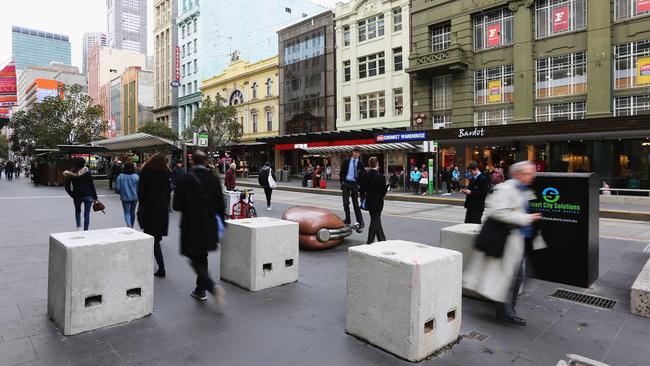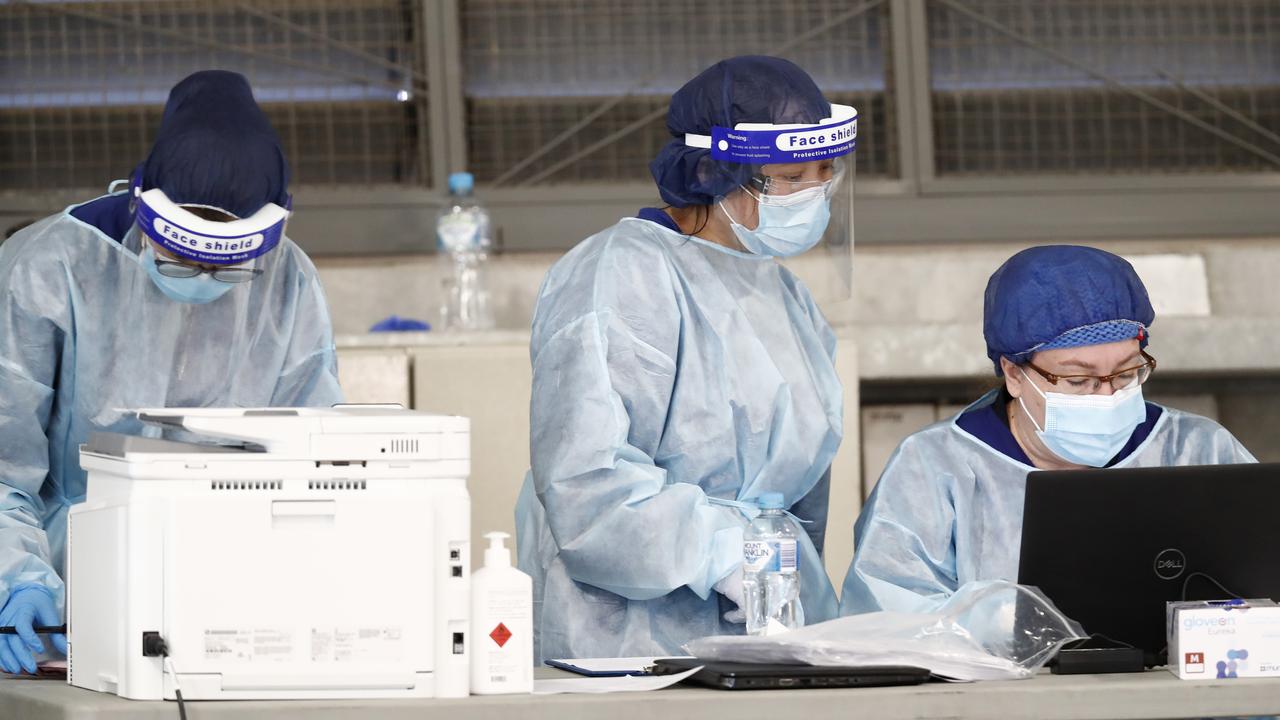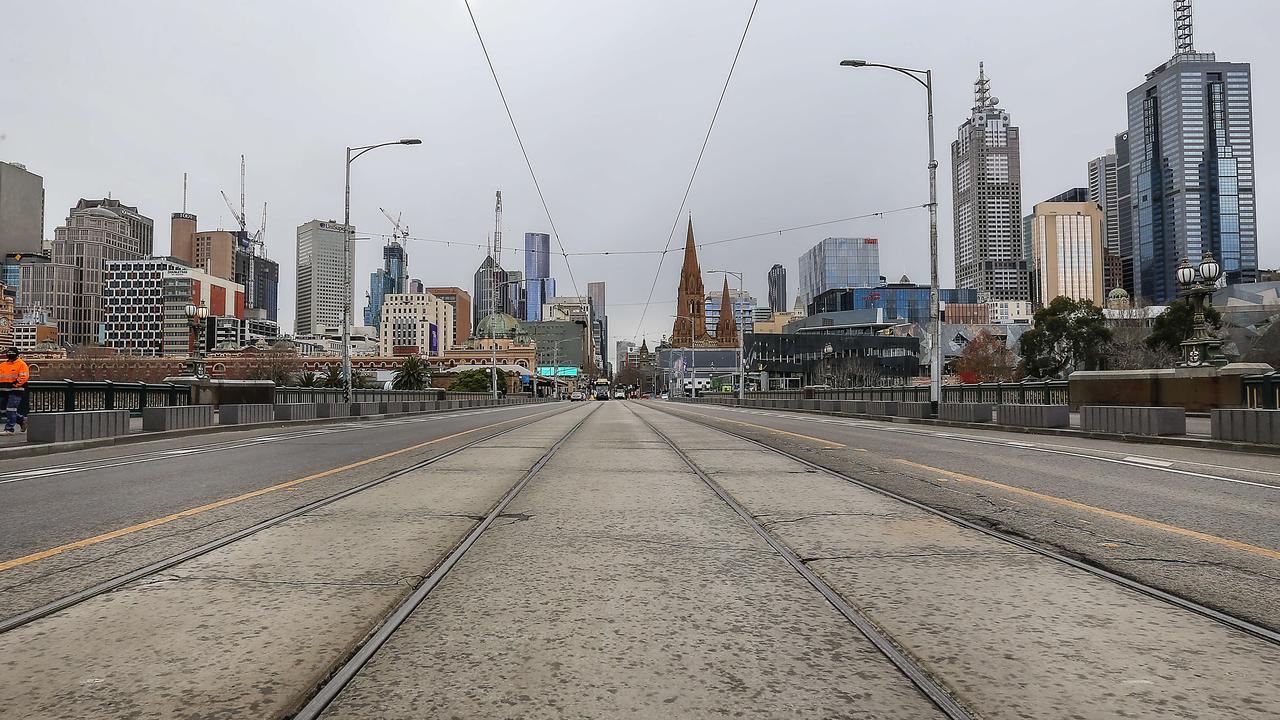In wake of Bourke St
BOURKE St is a familiar name for Victorians. It has been our city’s main street since colonial times, the central thoroughfare that threw up the saying, “As busy as Bourke St!”.

Opinion
Don't miss out on the headlines from Opinion. Followed categories will be added to My News.
BOURKE St is a familiar name for Victorians. It has been our city’s main street since colonial times, the central thoroughfare that threw up the saying, “As busy as Bourke St!”.
Those references belong to a more innocent time, one that began in the gold rushes of the 1850s and ended on a Friday lunchtime in January. “Bourke St” has now become shorthand for the carnage that unfolded there that day. It joins the Walsh St murders, Hoddle St massacre and Russell St bombing.
Six people lost their lives and 31 were injured when a man drove a car along the footpath in 75 seconds that subtly changed Melbourne. The Sunday Herald Sun today examines the effects on its victims of that horrendous act — and what led to it.
Unlike other outrages, the Bourke St tragedy did not quite come out of the blue. Trouble, allegedly in the form of 26-year-old Dimitrious “Jimmy” Gargasoulas, had been brewing for days. Allegedly, this erratic man was followed by police for many hours on the day before he unleashed a lunatic outburst of violence. It is a reminder of how vulnerable a civilised community is to a random act of savagery, whether it be fuelled by mental illness, quasi-religious terrorism or grotesque criminal malevolence.
In this case, it might well have been a blend of all three. Of course, judging what allegedly triggered the accused’s actions that day is for the coroner and ultimately the courts. Until then, Victorians are left facing uncomfortable questions raised by the tragedy — and posed by this newspaper’s reports today.
Let’s cut to the car chase ... for a start, why wasn’t there one? The sort that has police stopping fugitive drivers, not just following them?
Our reports allege police were in phone contact with the driver as he led them on a stop-start procession to the western suburbs and back. But it is still unclear why pursuers did not seize apparent opportunities to stop him. We might wonder if police were worried by the prospect of a split-second action that could be criticised by the public, media and a force command that stresses the principle of “Time is on your side” in pursuits and sieges.

Police constantly have to consider possible long-term consequences of tackling offenders head-on. Apart from all the hardware they carry, from pistol and baton and handcuffs to capsicum spray and Tasers, street police have the burden of an invisible load of rules and instructions that weighs heavily in any confrontation.
Hindsight is always “20-20”, it is said after every disaster. Aspects of the Bourke St case that cannot be detailed here, such as the role of the bail system, will eventually be ventilated in court.
Meanwhile, Victorians will ask other questions a coroner will have to consider. Is it possible, for instance, that Gargasoulas could have been detained under the Mental Health Act? Was he on the police “radar” for hours before the havoc of that black Friday. The public can’t be blamed for wanting to know exactly how an alleged stabbing turned into an alleged car chase all over Melbourne and then into something that killed and injured so many people.
The public cannot be blamed for wanting to know if, at any time in the hectic 16-hour prelude to Bourke St, something could have been done to stop it. Such as when the pursued car stopped in Yarraville and at South Wharf, and when it did slow circles outside Flinders St station just before the mayhem began.
Some questions will strike experts as naive or illogical but that doesn’t mean they shouldn’t be asked or answered, in the interests of transparency. To be fair, the authorities should acknowledge the gritty reality of street police work and the pressure it places on those we pay to keep us safe.
As our reports allege, until Gargasoulas turned the red Commodore into Bourke St, he was considered a “nobody”, with a huge ego who had became obsessed with a particular police officer in the days before the carnage. Police come into contact with such people every week.
One telling detail in our reports today is the revelation Gargasoulas received the best medical attention for his gunshot wounds in a secure VIP medical bay inside The Alfred hospital, just metres from his victims.
That fact is proof of a civilised society. But the concrete bollards now lining the footpaths of our city’s public areas are one more signal the peaceful life we once took for granted is under threat. So are the ever-tightening security procedures at every major event.
Each new act of mass violence prompts the rote response that we should not let it change the way we live. The truth is, it already has.


